In this continuation of Episode 27, we’ll hear from the five 2022 recipients of the UT Austin American Cancer Society Institutional Research Grant, which was created to foster the careers of new cancer researchers. Although some of their work might be challenging to understand, listen closely for all of the different kinds of research and how it gets done.
Guests
 Barbara L. Jones, Ph.D.Associate Director of social sciences at the LIVESTRONG Cancer Institutes in the Dell Medical School at the University of Texas at Austin
Barbara L. Jones, Ph.D.Associate Director of social sciences at the LIVESTRONG Cancer Institutes in the Dell Medical School at the University of Texas at Austin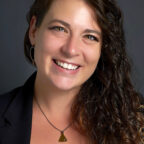 Cassandra E Callmann, PhDAssistant Professor of Chemistry at the University of Texas at Austin
Cassandra E Callmann, PhDAssistant Professor of Chemistry at the University of Texas at Austin Tara Kaufmann, M.D., MSCEAssistant Professor of Oncology at Dell Medical School at the University of Texas at Austin
Tara Kaufmann, M.D., MSCEAssistant Professor of Oncology at Dell Medical School at the University of Texas at Austin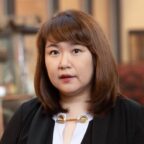 Chanhyun Park, PhDHealth Outcomes Researcher and Assistant Professor in the Health Outcomes Division at the University of Texas at Austin
Chanhyun Park, PhDHealth Outcomes Researcher and Assistant Professor in the Health Outcomes Division at the University of Texas at Austin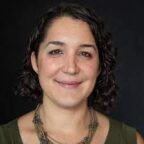 Jennifer Spencer, PhDAssistant Professor of Department of Population Health and the Department of Internal Medicine at the University of Texas at Austin
Jennifer Spencer, PhDAssistant Professor of Department of Population Health and the Department of Internal Medicine at the University of Texas at Austin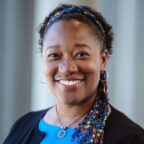 Lailea Noel, PhDAssistant Professor at the Steve Hicks School of Social Work at the University of Texas at Austin
Lailea Noel, PhDAssistant Professor at the Steve Hicks School of Social Work at the University of Texas at Austin
Hosts
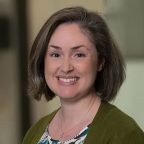 Kristen WynnSenior Administrative Program Coordinator at the Livestrong Cancer Institutes
Kristen WynnSenior Administrative Program Coordinator at the Livestrong Cancer Institutes
[00:00:00] Kristen Wynn: We are a resource for learners, including every member of the Live Strong Cancer Institute’s, on track educational pipeline from middle school to residency. We are a growing collection of interviews, talks, and experiences that uncover the myths and the uncertainties of cancer and careers and cancer in order to empower and inspire generations of thinkers and.
[00:00:25] This is Cancer Uncovered an education and empowerment podcast by the Live Strong Cancer Institutes.
[00:00:44] Welcome back to Cancer Uncovered. I am Kristin Wynn with the Lip Strong Cancer Institutes at Dell Medical School here at the University of Texas at Austin. This is part two of our episode featuring five new female cancer researchers at UT Austin who have all been awarded funding for their cancer research projects by the American Cancer Society Institutional Research.
[00:01:06] Please make sure to go back and listen to part one if you haven’t already. We heard about research projects from Dr. Cassandra Coleman, Dr. Tara Kaufman and Dr. Lelia Noel. If you’re ready for part two, remember, UT Austin has received money from the American Cancer Society to give to new cancer researchers on the ut.
[00:01:27] With the hope that this money will really jumpstart their specific projects in cancer research and their careers. The science and the research is not possible without supplies a paid staff and other necessities. So receiving funding for your research as a scientist is very important to continue the work.
[00:01:46] Before we jump in with Dr. Chanon Park and Dr. Jenny Spencer, remember the three big items we’re focusing. Beyond that, we’re going to learn some really cool new concepts in the science of cancer. One, consider the importance of teamwork and partnership. There isn’t a single researcher that doesn’t mention the team of people it takes to make all this research happen.
[00:02:08] Number two. Note how all of these different types of research and cancer are getting done. Sometimes you’ll hear about the use of proteins and chemicals. Sometimes you’ll hear about the use of surveys given to patients or one-on-one interviews with patients, or digging in and deeply reviewing the data that has already been collected about a certain type of medicine and the effects of that on its patients.
[00:02:30] Number three, think through the skills all of these researchers required to get all of this accomplished. Yes, they need to understand the science, but these researchers also have to be able to write. They had to write their application and write about the research to apply for this money, which is referred to as a grant.
[00:02:48] In this episode, they are all presenting their research to a room full of other scientists. They have to be able to collaborate and work well with other people, and they have to get creative and come up with other ways to get things done when they run into roadblocks from supply chain issues, to staffing shortages, to language barriers, don’t let the overwhelm takeover.
[00:03:08] Take a deep breath and remember, research is a process and a team sport. If you don’t understand the science, you are not. Make some notes if you can, about the concepts that you’d like to go back and research on your own later. You can always reach out to us about a topic or concept in more detail. If you need help, we’ll give you the email address to use at the end of this episode.
[00:03:30] Alright, I’m going to have Barbara Jones, the co-principal investigator, or PI one when it’s a lead scientists on the A C S I R G. Take it from here.
[00:03:43] Barbara Jones: Thank you very much, Dr. Noel. And now we will turn to Dr. Chen Park, who is an assistant professor in of health outcomes in the College of
[00:03:52] Chanhyun Park: Pharmacy. So thank you for giving me this opportunity to present my project, and my name is Han Park and I’m an an assistant professor in the Health Welcomes Division at UT College of Pharmacy.
[00:04:06] And the title of my presentation is gonna be Comorbidities and Me Educational Adherence among oldest older women with Early Stage Breast Cancer. Okay, this is online for today’s presentation, so I’m going to talk about the project funded by the HS AI grant. Specifically, I’m going to talk about the background of this project and the three specific aims and the methodology at the very high level.
[00:04:35] And since I’m still working on this project, I’m going to share some interim findings of this project, and then I’m going to wrap up this presentation with the impact of this project. So let me explain the background very briefly. So oldest older women aged 80 years and older are the first growing population in the United States, which now compromises about over 4 million women.
[00:05:05] And breast cancer is the most common, cancer only among oldest, or the women account for about 12 percentage of oral cancer cases. And the substantial number of adults, oldest older women with breast cancer have a very wide range of comorbidities, and those comorbidities influence both mortality and healthcare neutralization.
[00:05:31] So the advent endocrine therapy or. A e T includes tamoxifen and three aase inhibitors such as an astrol, electro, and stain, and those A is considered as a standard of care for advent therapy in postmenopausal with early stage hormone receptor positive breast cancer and audio adherence. A T is one of the key factors of long-term survivor in breast cancer patients.
[00:06:03] Despite this clinical benefit of taking a appropriately, all the adheres to a had post are challenging. So based on previous research, previous literature, all the adheres to 80 ranged from 33% to 88%. So for cancer research, for this oldest older women is liking because they are often. Fully represented in critical trial because of some exclusion criteria.
[00:06:34] Also, in some observational studies, they are less likely to have a large enough sample size to be considered at a STEM alone group and the oldest, so women are very heterogeneous population because of the variation in aging process and comorbidities. Therefore, Prostate cancer treatment for this population should be tailored with the consideration of various comorbidities and different aging process.
[00:07:05] So based on those background, I have developed my specific aims for this project. So a one. Compare the comorbid profile between women age 80 year and older, with only these days breast cancer with the two counterparts. And those two counterparts is gonna be first women age still between 65 and 79 years old with all these days breast cancer.
[00:07:33] Second counterpart is gonna be the woman aged over 80 years and order without any cancer. And the AIM two is gonna be identified comorbidities associated with medications. Two A and short-term survivor. Among oldest, I mean almost oldest old women population with breast cancer. And AIM three is gonna be using machine learning.
[00:07:59] I will developed prediction models for education, not adherence and short term survivor. Women age over 80 years and only stage breast cancer. So this project is guided by the Enders behavior models. So previously this enders behavior model has been applied to breast cancer research in older adult. So I decided to use this, I mean, conceptual framework.
[00:08:27] I use the C Medicare data for this project. So severe data contains cancer related information from cancer registry data, including patient characteristics and cancer related characteristics and some deaths related information. And the Medicare data is basically administrative claims data for covered healthcare services and utilization for Medicare.
[00:08:56] So my population is all disorder women treated with a for early stage hormone positive hormone receptor positive breast cancer. So to select this population, I use the serum part of the dataset for cancer related Informa to extract some cancer related information and the Medicare part of the data to extract treatment related inform.
[00:09:20] So it’s a retrospective cohort study. The study design in included three different periods. So the first one is the index identification period, and the index date is defined as the date of eight initiation after the breast cancer diagnosis. And I included one year pre-IND index period for measuring baseline characteristics of patients, including all different comorbidities.
[00:09:50] So the primary independent variables were age type and 14 different comorbidity indicators, which I mean, I leverage the National Cancer Institute’s comorbid Index to define those 14 different comorbidity indices, and the outcome variables were add adherence, addition to 80 and survival. So mainly I used the Rainier mixed model with Petitive measure for the audio part, and I also use the generalized linear model and cooks proportional heart on the bottle to obtain some rigid for my aim one and AIM two.
[00:10:29] And for AIM three, I’m gonna use machine learning to build some prediction models for lower medication adherence and shelter survival in this popul. So let me share some brief results that I’ve obtained so far out of this study. So the first one is the pattern of a use. Between patient age G, the 65 to 75 years versus 80, over 80 years old.
[00:11:00] So the pattern of age use were pretty much similar between those two groups. And then in both group addition to 80 decreased over the five year follow period. And overall the audio to 80 rate were lower in. Older than eight years compared to those less than eight years and out 14 different types of comorbidities.
[00:11:26] Nine of them had a higher frequency, higher percentage, among those older than eight years compared to those less than eight years, including my myocardial function or heart failure and some other condit. And then I hope this, so I’m still working on this project, so my AM three that I’m working on it now.
[00:11:50] And I hope this project will generate evidence on how to improve cancer care among already third women with breast cancer because they have substantial number of comorbidities and that can affect their quality of life and their healthcare utilization, and eventually their survivor. That’s it, and thank you.
[00:12:11] Thank
[00:12:11] Barbara Jones: you so much, Dr. Park, and we will now turn, turn to Dr. Jenny Spencer, who is an assistant professor at Dell Medical
[00:12:18] Kristen Wynn: School.
[00:12:19] Jennifer Spencer: Thanks so much. Um, it’s so exciting to present with such an amazing panel of fantastic women. Uh, my project is looking at inequities in H P V vaccination in the Covid 19 pandemic.
[00:12:31] So there are nearly 35,000 new H P V cancers diagnosed every year in the us. More than 90% of all of these cancers are preventable through H P V vaccination. Until recently, cervical cancer was the most burdensome of these cancers. It’s recently been surpassed by oral pharyngeal cancer. We still focus on cervical cancer as a main outcome because there are so many opportunities to prevent cervical cancer.
[00:12:59] The path to sort of eliminating cervical cancer as a public health problem has been outlined by a number of countries. . And one of the ways to do this is through implementing all the many tools we have. Unfortunately in a system where we have this many tools, we also have a lot of opportunities to begin disparities through the sort of failure of each of these tools.
[00:13:21] So we know, um, across the continuum of care, there are lots of opportunities intervene on the cancer pathway. And H P V vaccination provides another one of those We have to consider its role in the sort of full continuum of cancer. One thing we can do to understand the relative impact of aspects of this cancer care pathway is to use simulation modeling to ask questions about the impacts of interventions that happen at various points along this pathway.
[00:13:51] So for many of our cancer prevention and screening interventions, we can build simulation models to understand the link between H P V vaccination, which happens at ages 11 to 17, and cervical cancer, which happens at age. Much older than that sort of median, around 40 or 50 years old. And we saw in this analysis that the distance between high and low poverty counties shrinks over time.
[00:14:17] So the impact of H P V vaccination is actually to help close this disparity. Not fully, but to some extent, HPV vaccination is able to close the. Which brings us to HPV V vaccination in other parts of the us. So thinking about, um, the rest of the US as compared to Texas. In this graph, we can see firstly that the US is still lagging behind our goals for H P V vaccination, which ideally would be 80% if not higher, and that Texas is falling behind the rest of the.
[00:14:49] This is true across all racial and ethnic categories. So we see, um, each group in Texas is doing worse than the comparable group in the United States. But we also see an interesting pattern for all, both the US and Texas, where groups that maybe traditionally have lower cancer screenings, so non-Hispanic black individuals, um, and Hispanic individuals.
[00:15:11] We see actually a higher initiation of H P V vaccination than compared to non-Hispanic white individual. Those who fall into an other race or ethnicity category go into sort of two different directions when we compare the rest of the US and Texas and this graph, but this, along with some other studies showing similar results, suggest something promising potentially about the impact of vaccination on closing some racial disparities in cervical cancer.
[00:15:38] This brings us to the role of the COVID 19 pandemic. So this is a study, um, done at Mass General, looking at the, uh, use of cancer screening during the pandemic. And you can see this graph shows over time, cancer screening by month, and there’s a huge decline in the months of the pandemic when everything was.
[00:15:57] Fully closed and they stopped screening almost completely in March and April of 2020. And then we see a gradual recovery back to rates of screening that varies by race and by cancer sites. So you can see for this Centro graph in cervical cancer, , all racial groups sort of recover back to about pre pandemic screening levels for colorectal cancer.
[00:16:19] We see a much slower recovery and it’s taking a while for all groups to get back, but they’re still kind of hovering together. And then in breast cancer screening, we see some recovery, but we see that the white group is recovering much faster than non-white participants. So the sort of difference in the recovery is important in thinking about the impact of covid 19.
[00:16:42] So that brings us to my, um, a c s award, which will use Texas Medicaid data to look at H P V vaccination in the context of Covid 19 in Texas. So we’ll take individuals who are enrolled in the Texas Medicaid or children health insurance program and aged 11 to 17 years, and we’ll compare monthly vaccination rates for this group before and after the Covid 19 pandemic.
[00:17:08] Before and perhaps during, because the pandemic is still happening, but before and after the peak of the pandemic, we’ll compare initiation and completion with a goal of looking one at how steep the magnitude of the decline was. We know from some other studies that there was a delay in H P D vaccination over this period, and then how the recovery is going through, um, data that will continue through midway through 2021.
[00:17:32] and whether there are any racial disparities in either that initial magnitude of decline or in the magnitude of the subsequent recovery. We’re getting data back through 2017 because the first step will be modeling the, um, seasonality of H P V vaccination. So we know vaccination tends to increase in the summer and fall and decrease in the winter.
[00:17:54] As a preparation, going back to school, a lot of kids go in and get routine wellness visits and we’ll get their vaccinations at that time. So we need to make sure we’re getting sort of the seasonality component so that we can get the right tracking of what we think should be going on. And then we’ll be able to incorporate this into simulation models like the one that I built before.
[00:18:13] To start to think about what the impact of this might be on cancer in the long term in Texas. And importantly, to start thinking about what we do about it. If we do identify differences, um, by race or if we are looking at the Medicaid data and we see that we’ve seen a decline and a slow recovery, how we can actually start to, um, improve that in a meaningful way.
[00:18:33] And that is my presentation. Thank you so much. Thank
[00:18:36] Barbara Jones: you so much, Dr. Spencer. Well, I think that you will all agree that we have made some wonderful investments in young investigators across the full range of cancer research, you know, from bench to bedside, and so we feel really good about our wonderful a c s recipients.
[00:18:54] Can you tell us, you know, the impact of receiving this type of an award on your.
[00:18:58] Jennifer Spencer: But it’s really exciting because the Medicaid data and work, you know, working with Texas Medicaid is something that I’m, I’m hoping to, to do long term. And getting, uh, the chance to, to be able to buy the sort of data set that I need for this project and start to build that relationship to think about longer term pro projects has been really valuable.
[00:19:16] Tara Kaufmann: Um, but yeah, it’s also been incredibly impactful for. It takes a lot of support to for p monitoring. So I’ve been able to hire clinical research coordinator support, which has really been essential to get the study off the ground, be able to do this, and develop and collect pilot data to support larger grants that I’m putting in.
[00:19:33] So for me, it’s really been, um, essential and a great learning experience.
[00:19:38] Lailea Noel: Yeah, and I just wanted to add Dwayne, C B P R work also takes a lot of time and effort and being able to put our money behind the effort that, that, that, that we want to be a part of the partnership really helps a lot to engage communities and build trust and, and get that train moving down to track.
[00:19:55] I just wanna say it.
[00:19:56] Cassandra Callmann: It’s been super helpful because purchasing chemicals is super expensive, , um, so monetarily it’s been really been really helpful in that way, but also it’s allowing us to get some really cool preliminary data that hopefully should help make us more competitive for
[00:20:10] Lailea Noel: larger funding.
[00:20:11] Chanhyun Park: Yeah, I think research funds helped me a lot since I was able to set up my research program out of this fund. So I was able to hire research assistant and I was able to get this data set. So hopefully using this data set, I hope I can do so many different things. Do you
[00:20:31] Barbara Jones: all wanna talk a little bit about, you know, one of the things that I’ve noticed is that you’ve created sort of a cohort and can you talk about, and maybe specifically what that’s like for young investigators, but young female investigators to sort of have this group, uh, together, even though your research.
[00:20:47] In some ways it’s very different. I’ve seen you all work together and I wonder if you might talk about that. Yeah. I think
[00:20:52] Lailea Noel: that’s one of the best parts about this is that there’s a cohort of other female investigators. I mean, I kind of had worked a little bit with Tara, at least knew Tara prior to this, but getting to know the others with it has been fantastic.
[00:21:05] And Jenny and I have been working together now on some papers and. I’m looking forward to working with Tara on some things in the future possible, and I’m sure that I’ll be able to find overlap with the others and it goes beyond that. Jenny and I are talking about football and other things, so I think that it’s been good to build
[00:21:23] Jennifer Spencer: comradery.
[00:21:24] It’s nice starting at a, a new university and being and moving to a new place. I’m sure many, many of us have also, Experience right? Of, of uprooting your life and going to a new place and just finding other people who are at sort of a similar career phase and life phase is really reaffirming and just having people to, to struggle with or, you know, celebrate with as you’re going through it is really nice.
[00:21:46] Barbara Jones: Well, I know that we are all, um, very impressed with your work and proud of you. Um, you should know that we are all really excited to see your science, uh, continue to grow and to help build this community of science together.
[00:21:59] Kristen Wynn: Check your notes. What did you put down to go back and research? If you have questions for us, if we can help you decipher some of the concepts, please email us at Live Strong Cancer Institutes delm med dot u texas.edu.
[00:22:14] For more information about the Live Strong Cancer Institute, Check out our website. We’re at delm me dot u texas.edu. You can also follow our chair, Dr. Gale Eckhart on Twitter at s Gale Eckhart. Eckhart is spelled e c k h a r d t. This is Kristen Wan Reporting for Cancer Uncovered. Thank you for listening and learning with us.